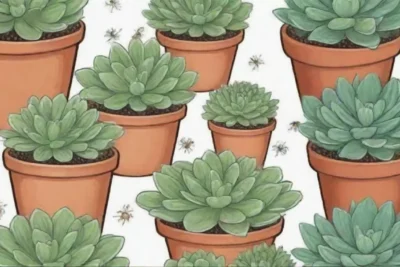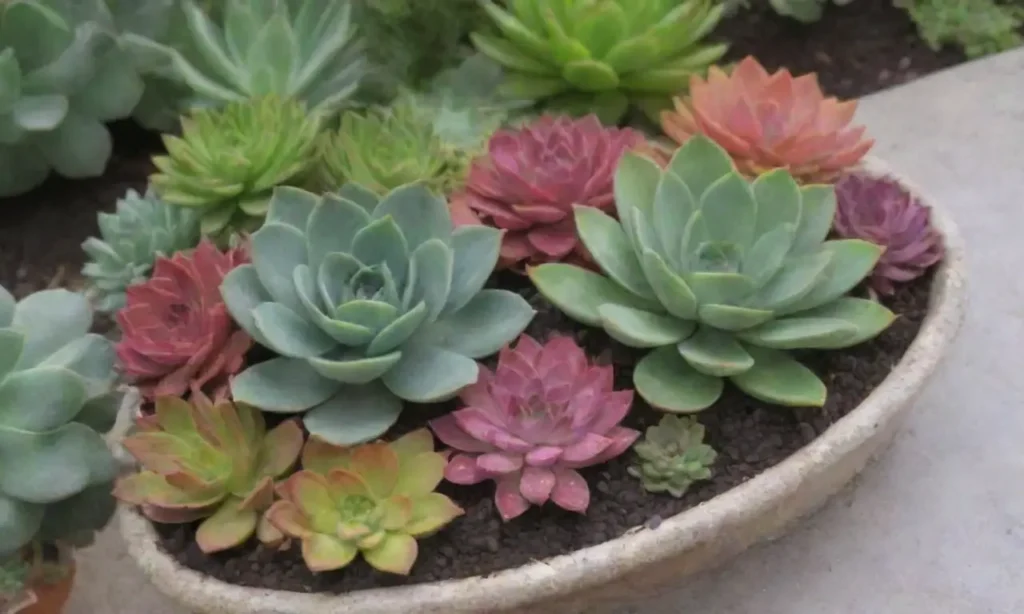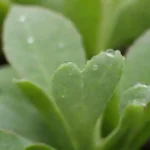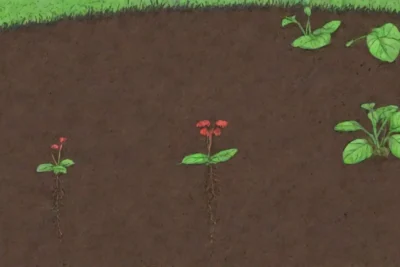
DIY Pest Traps: Effective Solutions for Your Succulent Garden

Introduction
As the weather warms and the days grow longer, many succulent enthusiasts eagerly prepare their gardens. However, with this excitement often comes the threat of pests that can wreak havoc on these delicate plants. Whether you're nurturing Echeverias, Haworthias, or Aloe, a pest invasion can lead to unsightly damage, stunted growth, or even death. Understanding how to combat these invaders using DIY pest traps can ensure a thriving succulent garden.
This article will explore various DIY pest traps that are not only effective but also environmentally friendly. From sticky traps to natural predator attractants, we will provide a well-rounded guide on creating your own pest control solutions. By the end, you will be equipped with practical knowledge to keep your succulent garden healthy and vibrant.
Understanding Pests Commonly Affecting Succulents
Before diving into trap creation, it’s essential to understand the types of pests that commonly target succulent gardens. The following are just a few notorious culprits that can cause significant damage if left unchecked:
Aphids
Aphids are small, soft-bodied insects that can be found in a variety of colors, including green, black, and yellow. They primarily feed on the sap of plants, weakening them over time. More importantly, aphids can transmit plant viruses, making them an immediate threat to not only succulents but other plants in the vicinity. Identifying aphids early is crucial; look for clusters on the undersides of leaves and near new growth.
To combat aphids, consider making a sticky trap or using a simple soap spray. Sticky traps can be created using yellow paper coated with a layer of petroleum jelly, which lures and captures these pests effectively. This approach is ideal for succulents, as it targets pests without harming the plants themselves.
Mealybugs
Mealybugs resemble small, cottony white masses on plant leaves and stems. They feed on plant sap and can cause yellowing and wilting. Not only do they impact the plant's health, but they also secrete a sticky substance known as honeydew, attracting other pests like ants. Early identification and control are essential, as they multiply quickly.
For mealybug control, consider creating a simple alcohol trap. Mix equal parts of water and rubbing alcohol in a spray bottle, and gently spray the affected areas. The alcohol will effectively kill these pests on contact. To catch any that might fall away after spraying, place yellow cards at the base of the plants.
 How To Safely Propagate Succulents While Managing Pest Risks
How To Safely Propagate Succulents While Managing Pest RisksSpider Mites
Spider mites are less visible to the naked eye, often appearing as tiny specks. They thrive in hot, dry conditions and can cause significant leaf damage, leading to bronze or stippled leaves. To identify an infestation, look for fine webbing between leaves. Regularly inspecting plants is crucial for early detection.
For spider mite control, a homemade mite trap can be very effective. An inexpensive piece of cardboard painted either red or blue can serve as a lure. Coat one side with a sticky substance—like petroleum jelly—to catch spider mites as they are drawn to the color. Place this trap near infested plants to maximize its effectiveness.
Creating and Implementing DIY Pest Traps
Now that we've discussed the pests, it's time to dive into how you can create and implement these DIY traps effectively in your succulent garden. Here are some popular methods to consider:
Sticky Traps
Sticky traps are incredibly effective for catching a variety of flying and crawling pests, including aphids and fungus gnats. Creating your own sticky traps is not only straightforward but also cost-effective. Here’s how to make one:
- Materials Needed: You will need yellow or blue cardstock, scissors, a hot glue gun, and petroleum jelly.
- Instructions: Cut the cardstock into rectangles about 4-6 inches wide. Apply the petroleum jelly generously on one side of each rectangle. The vibrant colors attract pests, while the sticky surface will trap them upon contact.
- Placement: Position these traps near your succulent plants, ideally hanging them on stakes or placing them in pots. Check regularly and replace them as needed.
Sticky traps can be particularly effective during the growing season when pest populations tend to peak. Regular assessment and replacement keep your traps functioning optimally.
Soapy Water Spray
An excellent way to manage pest infestations without resorting to harmful chemicals is by using a soapy water spray. This method works by suffocating pests like aphids and mealybugs, making it an effective immediate solution. Here's how to make one:
- Materials Needed: A spray bottle, water, and mild dish soap (avoid detergents with added fragrances or bleach).
- Instructions: Mix one tablespoon of dish soap into a quart (about 1 liter) of water. Shake well to ensure it’s mixed thoroughly.
- Application: Spray the solution directly onto affected areas, including the undersides of leaves where pests might be hiding. The soap will coat the insects and suffocate them, effectively reducing their population.
This method is not only effective but also safe for many plants, including succulents. However, always test a small area beforehand to ensure there are no adverse reactions.
 Exploring the Benefits of Plant Quarantine Against Pests
Exploring the Benefits of Plant Quarantine Against PestsHomemade Essential Oil Spray
Another fantastic DIY pest control method involves using essential oils to deter unwanted visitors. Many pests, including spider mites and aphids, are sensitive to certain oils. Here's how to create your own essential oil spray:
- Materials Needed: A spray bottle, water, and essential oils of your choice—popular options include peppermint, neem, or rosemary oil.
- Instructions: Mix about 10-15 drops of essential oil with a quart of water. Shake well to combine the ingredients.
- Application: Spray your solution onto your succulents, focusing on areas where pests are present. This not only helps deter the pests but can also provide a pleasant fragrance to your garden.
Essential oils can deter a wide range of pests due to their strong scents. However, these oils can also repel beneficial insects, so use them cautiously and sparingly.
Conclusion

Creating DIY pest traps is an excellent way to protect your succulent garden without relying on harsh chemicals. By understanding the types of pests that can affect your plants and using simple, natural methods to deter them, you can maintain a thriving succulent collection. From sticky traps to soapy water sprays, the solutions discussed in this article are not only effective but also environmentally friendly, keeping your garden safe for both plants and pollinators.
As you implement these strategies, it's important to remain vigilant. Regularly inspect your plants, refresh your traps, and adapt your methods as needed. Remember, prevention is key! A little effort goes a long way in ensuring your succulent garden remains a vibrant oasis free from pest problems.
By utilizing these DIY pest traps, you can confidently enjoy the beauty of your succulents, knowing you've taken proactive steps to safeguard their health. Happy gardening!
 The Benefits of Neem Oil for Treating Succulent Pests Effectively
The Benefits of Neem Oil for Treating Succulent Pests EffectivelyIf you want to read more articles similar to DIY Pest Traps: Effective Solutions for Your Succulent Garden, you can visit the Common Pests category.






You Must Read